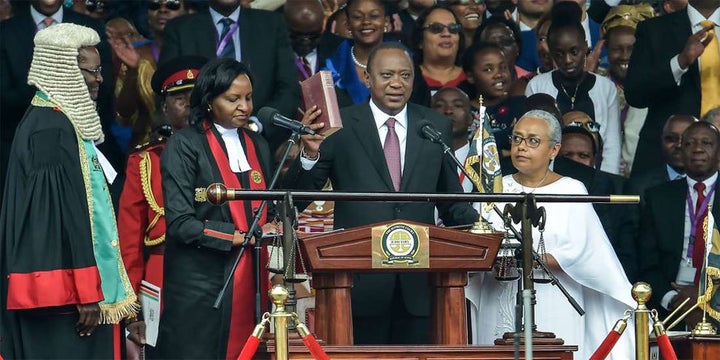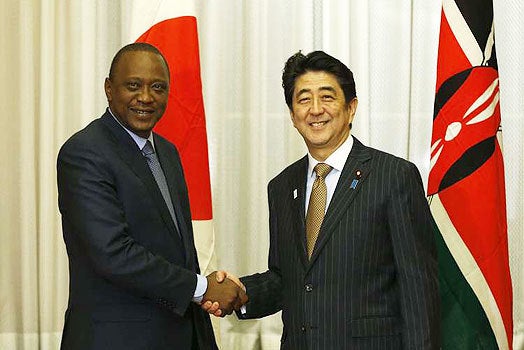
Nearly one million Kenyans are pushed below the poverty line and remain poor as a result of healthcare expenses.
By: Siddharth Chatterjee & Dr Githinji Gitahi
12 December 2017 is a remarkable day. 3 important events coincide.
12 December is Jamhuri Day, an auspicious day for Kenya, as it marks her independence from colonial rule in 1963.
On 12 December 2017, the Government of Japan is hosting a high level meeting on universal health coverage. Japan’s Prime Minister Mr Shinzo Abe stated during the UN General Assembly, “Universal Health Coverage , is essential for addressing global challenges and achieving the core principle of the 2030 Agenda; that is, the realization of a society where “no one is left behind.” Kenya’s Cabinet Secretary of Health, Dr Cleopa Mailu is leading a high level team to Tokyo.
And 12 December, 2017 is also Universal Health Coverage Day, the anniversary of the first unanimous United Nations resolution calling for countries to provide affordable, quality health care to every person, everywhere.
In Kenya, illness can mean financial ruin. Every day families are forced to sell their assets, rely on community support or see their modest life savings wiped out by medical bills.
Ill health is a substantial burden not only on Kenyan families, but also on the country’s economic growth. Consider this. Every year, nearly one million Kenyans are pushed below the poverty line and remain poor as a result of healthcare expenses.
“Universal health coverage should be [viewed] as a rights issue,” said Dr. Tedros Adhanom Ghebreyesus, the Director General of the World Health Organization (WHO). “Many families are getting into poverty because they are spending their savings for health care services.”
Across the globe there is a strong correlation between high rates of out-of-pocket expenses and catastrophic and impoverishing health expenditure. It is a powerful factor in inequality of access to healthcare, often forcing the poor to forgo medical treatment. It also increases costs, because when poor people finally seek treatment it’s either too late or else complications caused by delay have worsened their condition.
Approximately four out of every five Kenyans have no access to medical insurance, so the cruel reality is that most are just an accident or illness away from destitution. Among the poorest quintile a mere 3% have health insurance, this provided by the government’s National Hospital Insurance Fund (NHIF). This rises to 42% of the wealthiest fifth where private cover is also more common. Additionally, there are stark disparities between rural and urban populations, where rates of coverage are an average of 12% and 27% respectively.

At President Kenyatta’s inauguration speech on 28 Nov 2017, he stated, “Over the next 5 years, my Administration will target 100% Universal Healthcare coverage for all households”.
To its credit, the Kenyan government is taking steps towards reducing these inequalities. Payments for primary and maternal health services in public facilities have been abolished, resulting in increased utilization and improved outcomes, particularly among the poorest. President Uhuru Kenyatta at his inaugural speech emphasized, “Over the next 5 years, my Administration will target 100% Universal Healthcare coverage for all households”.
Recent initiatives by the NHIF–such as inclusion of outpatient care and introduction of health insurance subsidies for the poor–are helping to expand coverage beyond those in formal employment. As a result, roughly 88.4% of households with health insurance are covered through the NHIF.
But as long as 33.6% of Kenyans survive on less than US$1.90 per day, there are still millions who cannot access quality healthcare.
Lack of public awareness, high loss ratios due to fraud, and reluctance among insurers to underwrite cover for the poor are also important.
Health insurance contributes only about 13% to national health expenditure, with the balance made up of out-of-pocket expenses at point of treatment, government and tax revenues, and donor funding. Such statistics undermine Kenya’s ability to achieve universal health coverage, enshrined in Kenya’s Vision 2030 and Sustainable Development Goal 3.
There is a clear need to develop low-cost, innovative solutions for expanding insurance coverage and technology must form part of such solutions. Technology-backed automation can improve efficiency and enhance transparency, both key requirements.
Mobile money can perform faster, more transparent and targeted health payments through health e-vouchers. Technology can process claims and enable healthcare consumers and providers to interact more efficiently, while offering more customized products to people of all incomes.
Efficient storage and sharing of patient data could reduce the cost of care by, for instance, tracing false claims, preventing repeat tests, or avoiding misdiagnosis.
Technology can also offer substantial savings in administration costs, which currently swallow a staggering 40% of the NHIF’s revenue, far in excess of the industry norm of 3-4%. Effective IT systems would help to reduce this astonishing disparity, as would improved governance and transparency. A lack of analytical capacity hobbles the NHIF’s ability to forecast and respond to increasing costs, hindering strategic planning and development. Better technology can address this.
Ultimately, sustainability demands increased investment in preventive care and primary health. Diverting cash away from the 60% of the health budget that currently goes to curative care will pay dividends. Better primary care reduces ill-health and catches disease at an earlier stage, when treatment is cheaper and more effective. It also frees up resources to expand insurance coverage for the poor.

President Kenytta and Prime Minister Abe shake hands during TICAD in Nairobi in September 2016. Universal Health Coverage can be at the vanguard of this partnership.
Launching the country’s SDG 3 Partnership Platform, to spur universal health coverage in Kenya with the United Nations in New York during the UN General Assembly in 2017, Kenya’s Cabinet Secretary for Foreign Affairs Dr. Amina Mohamed remarked, “As a government we have clearly prioritized the Universal Health Coverage agenda because it is one of the ways to protect our people from the consequences of out-of-pocket health expenditure which in Kenya forms about a fifth of family spending”.
We would welcome the Government of Japan and the Japanese private sector to join the SDG platform in Kenya, which can potentailly leapfrog universal health coverage and become a model for other countries too.
Let us join hands to free every Kenyan from the tyranny of poverty by achieving universal health coverage. It is the very foundation for economic development and prosperity.
Siddharth Chatterjee is the United Nations Resident Coordinator in Kenya. Dr Githinji Gitahi is the Global CEO of Amref Health Africa.
